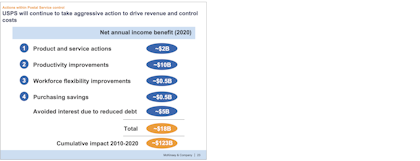Almost every professional needs to give a presentation from time to time. But many people are terrible at it, wasting the opportunity to make an impact.
How do you easily turn a business presentation into a clear, compelling story?
The Situation-Complication-Resolution (SCR) Framework provides a structure for clearly defining business challenges and outlining strategies and solutions. The SCR Framework, developed by McKinsey, offers a simple and effective reasoning approach. Although designed for consultants, the SCR framework can easily be applied to other roles and industries.
In this article, you will learn about the SCR framework and how to use it. You will also see how top consulting firms have applied this framework to several real-life strategy presentations.
What is the SCR Framework?
Every Hollywood film, every book, and essentially every memorable tale you've ever heard follows the so-called 'classical story arc':
Take Disney's "The Lion King" as an example:
If you simplify this further, every story has three parts: Situation, Complication, and Resolution.
At its core, SCR is simply this three-act story structure:
- Situation: Fact-based description of the current situation.
- Complication: The reason the situation requires action. What is the problem (or opportunity)?
- Resolution: What we need to do to resolve this complication (or capture the opportunity)?
An example:
- Situation: The Enterprise Cyber Security market in the US is rapidly growing at a 20% CAGR.
- Complication: Norton is poorly positioned to get a share in this growing profit pool.
- Resolution: Norton must acquire a leading competitor and invest $200 million in building capabilities to establish a winning position.
When crafting a presentation storyline, first outline the Situation, followed by the Complication(s), and then present your suggested Resolution(s). This is the SCR framework.
In a business setting, unlike a Hollywood screenplay, you should keep the Situation and Complication sections as clear and short as possible. Your audience is more interested in solutions than extended narratives, so the Resolution section should account for most of your slides (ideally structured according to the Pyramid Principle).
What is an example of a SCR framework?
Example 1: McKinsey x USPS
Back in 2010, McKinsey applied the SCR framework to the United States Postal Service (see the full deck here). The story elements are as follows:
Situation: USPS is experiencing unprecedented losses due to (1) volume declines, (2) growing retirement funding requirements, and (3) lower-than-expected effect of cost savings.
Complication: Unless we do something, things will worsen due to market trends, growing costs, regulations, and competitive forces.
Resolution: USPS must do four things: (1) Grow volume through new products and services, (2) Find aggressive productivity improvements, (3) Increase workforce flexibility, and (4) Reduce costs by improving efficiency and procurement.
Example 2: McKinsey x Global Steel Industry
In 2014, McKinsey applied the SCR framework to the global steel industry (see the full deck here).
Situation: The global steel industry is not financially sustainable, as evidenced by (1) negative cash flows among market operators, (2) increasing debt levels, and (3) deteriorating EBITDA margins.
Complication: Unless we do something, EBITDA margins are expected to be even lower going forward, which is unsustainable for the industry.
Resolution: An extensive restructuring is required. Global capacity needs to be reduced by 300 million tons.






















